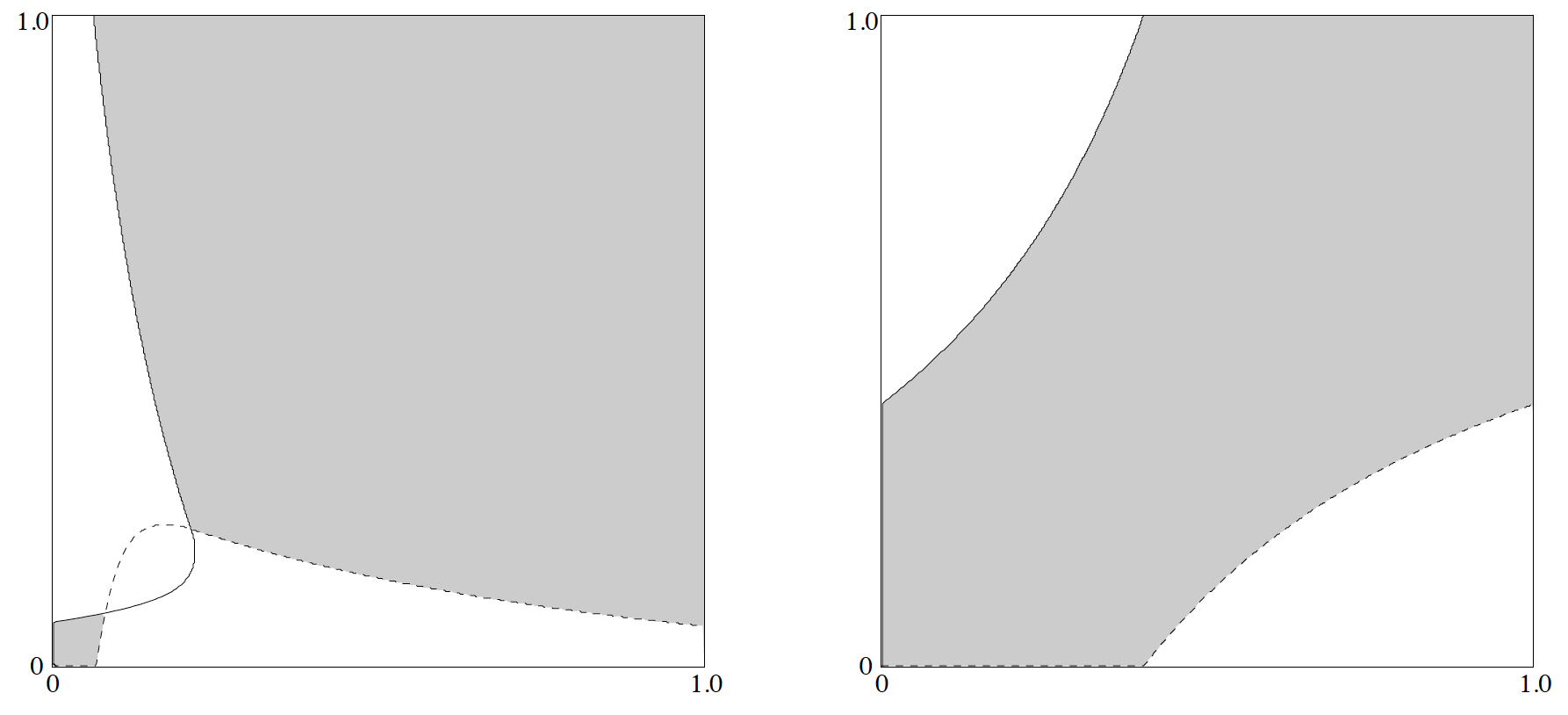“The Marriage Model with Search Frictions”, Smith (Journal of Political Economy, 2006)
https://papers.ssrn.com/sol3/papers.cfm?abstract_id=34242THIS WAS ACTUALLY FINISHED IN 1994. HERE IS THE WORKING PAPER.
NOTE THAT ANY EXISTENCE PROOF, DERIVING THE DISTRIBUTION OF AVAILABLE AGENTS, WAS MISSING FROM A 1990 APPLIED MATH PAPER ON THE SAME TOPIC (“THE JOB SEARCH PROBLEM AS AN EMPLOYER-CANDIDATE GAME”).
The job search problem as an employer–candidate game
Consider a heterogeneous agent matching model in which the payoff of each matched individual is a fixed function of both partners’ types. In a 1973 article, Becker showed that assortative matching arises in a frictionless setting simply if everyone prefers higher partners. This paper shows that if finding partners requires time-consuming search and individuals are impatient, then productive interaction matters. Matching is positively assortative—higher types match with higher sets of types—when the proportionate gains from having better partners rise in one’s type. With multiplicatively separable payoffs, these proportionate gains are constant in one’s type, and “block segregation” arises, a common finding of the literature.
In the figure below, at left is the unique search equilibrium with the supermodular function f(x,y)=x+xy+y of the agents types x,y, and at right the uniquesearch equilibrium for the log-supermodular production function e^{xy}.
 Fun HW exercise to teach why log-supermodularity gives sorting: Assume a continuum of searchers with a constant unemployed mass u(a) and u(b) of two types a<b, and output f(x,y)>0 when x matches with y, each in {a,b}. Higher partners are worth more: f is increasing in y. Partners arrive at rate ρ>0 in continuous time. Delay is the cost of search: interest rate r>0. If f is LSPM, show that type b cannot have a lower cutoff partner than type a.
Fun HW exercise to teach why log-supermodularity gives sorting: Assume a continuum of searchers with a constant unemployed mass u(a) and u(b) of two types a<b, and output f(x,y)>0 when x matches with y, each in {a,b}. Higher partners are worth more: f is increasing in y. Partners arrive at rate ρ>0 in continuous time. Delay is the cost of search: interest rate r>0. If f is LSPM, show that type b cannot have a lower cutoff partner than type a.
Solution: For a contradiction, assume type a declines matching with a, but type b accepts matching with a. Assume unmatched average present values v(a) and v(b). Then
(1) rv(a) = ρ u(b) f(a,b) > f(a,a) and (2) rv(b) = ρ u(a) f(a,b) + ρ u(b) f(b,b) ≤ f(a,b)
Since f is LSPM, multiply (1) by f(b,b)/f(b,a) ≥ f(a,b)/f(a,a) to contradict (2).
Related blog post: Do Hotties Match with Hotties? Becker’s Assortative Matching Tested via Facebook and HotOrNot.com
Sylvester Stallone (1976) on strategic complements in the marriage model. Sly had has this wonderful metaphor in Rocky: “I dunno, she’s got gaps, I got gaps, together we fill gaps.”
